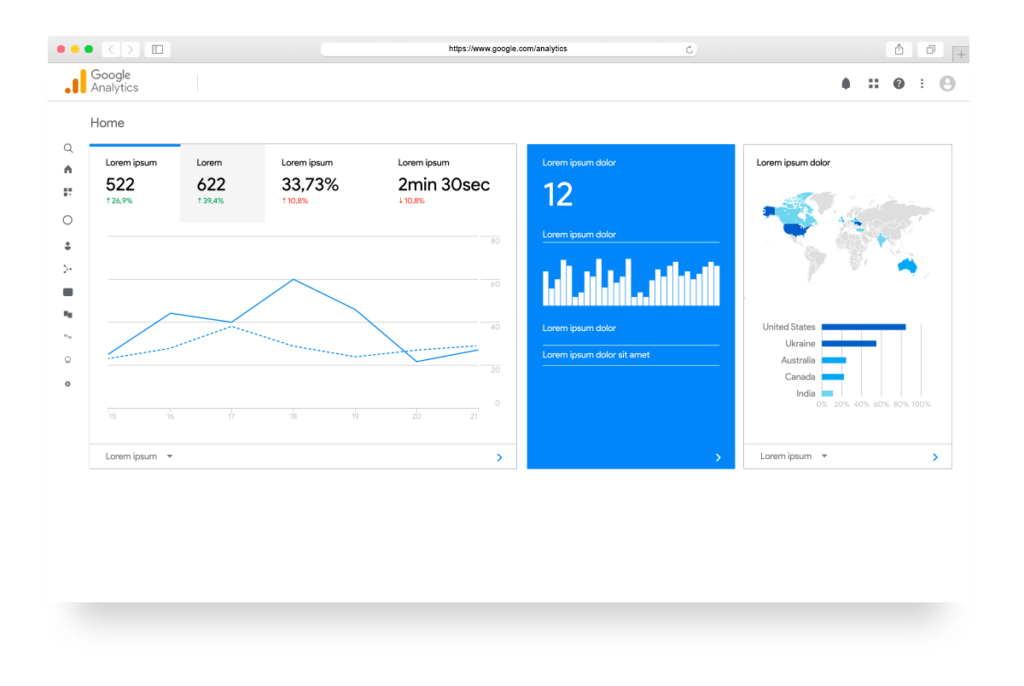Having entered the second half of 2024, it’s fair to say that there’s been a lot going on this year! We’ve had the evolution of AI in digital marketing, a complete U-turn on the post-cookie age, the tumultuous March core update, and more.
Because so much has been happening, we thought it was time to publish a recap – and also a look ahead – at the state of digital marketing as a whole. Where are we now in 2024? And where are we going? The digital marketing landscape is changing all the time, but there are always some points amid all the chatter that merit a little more discussion. All aboard for the Soap Media whistle-stop tour!
TL;DR: There are many important changes afoot in digital marketing in the second half of 2024. The surprise cancellation of Google’s plans to deprecate third party cookies doesn’t alter the fact that the relevance of first-party data is growing. It’s a major player when it’s combined with things like press releases. People are also getting their news and information from ever more varied sources, and the popularity of platforms like Instagram with journalists means that multimedia content is growing in importance as well. It’s very much not a case of carrying on as you always have done; you need to adapt!
The Survival of Third Party Cookies
We think it’s fair to say that nobody expected this!
We’ve written about the onset of the post-cookie age a lot recently, and we’d do so again, because it was so vitally important to get the word out there! However, having advised that Google’s latest postponement to their plans of phasing out third party cookies shouldn’t be taken as a sign that it wasn’t happening, we now have a statement from Google a mere 3 months later that confirms the opposite.
Google have abandoned their 4-year old goal to block third-party cookies on Chrome, and will instead pursue an approach that gives users an “informed choice that applies across their web browsing”
Until this statement, we wouldn’t have hesitated to say that the single biggest narrative in any “state of digital marketing” analysis would have been the pending loss of third-party cookies from Google Chrome. It really was massive, because Chrome is the most popular browser in the world. This development would have made much bigger waves than when Firefox and Safari followed a similar course years ago… but now those waves are yesterday’s news.
So, what now?
Well, once we’ve had time to properly gather our thoughts, we’ll be bringing you a dedicated article that dives into all the repercussions of this unexpected development in detail. However, for now we think it’s important to say that you still shouldn’t be counting on cookies for your marketing visibility.
Yep, that’s right; even after Google has pulled the rug from under us we’re still advising that you postpone the party, and play it cautiously.
We say this because the changes that are here right now have already made a massive impact. We’ve personally seen Consent Mode—a related development that aims to give users greater control of their data—cause “traffic drops” in Google Analytics of around 90%, so if you think that the survival of third-party cookies means that your data is bulletproof, then think again!
Around 70% of consumers tried to block cookies in 2023, so this sort of thing is already common. Google’s revised stance indicates that they’ll continue giving users the choice as to whether they accept cookies or not. When we hear that, it doesn’t sound as though that 70% stat will be getting any lower any time soon.
As a result, the value of first party data is skyrocketing. Primary insights and your own storytelling can’t be taken from you by any potential loss of data visibility, which brings us neatly on to say…

Data is the King
Yes, you read that right; although content is (of course) still king, we’re awarding that same honour to data!
However, perhaps we should more accurately say that data is the kingmaker.
The addition of data makes all of your content and the stories that it seeks to tell stronger. It also helps journalists to maintain credibility and prevent accusations of “fake news”. According to Cision, the single biggest named obstacle for journalists in the last year was the need to maintain credibility as a trusted source, which really showcases just how important data is becoming. After all, what constitutes good content? Sure, having a compelling story to tell is vital, but what makes that story extra compelling is the fact that it’s true.
And how do you establish that something is trustworthy?
You guessed it: with data.
2 out of 5 journalists expect that data will play a much bigger role in how they approach work in the rest of 2024. The key competitor to data is engagement. It’s fair to say that clicks and shares can sometimes be prioritised over the simple act of keeping readers informed, but that’s a dangerous precedent. Anyone who looks at any form of news knows that “fact checking” to verify claims has never been more visible, and accuracy matters to Google too. That’s why EEAT (experience, expertise, authority and trustworthiness) is now a key ranking factor.
Based on that, our advice is to find a great story that can be backed up by data. If you always do that, it’ll never cease to be an asset! This is also why we’ve recently really stepped up our own data science service, allowing us to be more grounded in data than ever. Our partner, Hollywood Bowl, has benefited greatly from this new service by being able to understand whether their PPC activity was actually cannibalising their organic traffic, or providing uplifts above and beyond that. We’ve also been able to build and maintain a predictive model for lifetime value (LTV), enabling our partners to evaluate the performance of their traffic despite some of their previous favourite metrics no longer featuring in Google Analytics 4.
Press Releases Are Still Great!
It’s been said before that press releases have had their day. Perhaps they used to be effective, but surely they can’t still be a big player in the digital PR landscape?
If that’s what you’ve been hearing, then we strongly disagree!
In our experience, press releases are still popular with journalists as long as they’re relevant.
As it so often is, the key is the word “relevant”. For instance, AI content isn’t innately bad as long as it’s relevant and informative. The same is true of press releases.
77% of journalists would block a PR for spamming them with irrelevant pitches, but 74% of journalists would value receiving a relevant press release! 68% of journalists also find that press releases are valuable for giving them story ideas. Make sure you don’t let the stats for bad press releases overshadow the value of the good ones. If journalists still value good press releases, then they should certainly still find a niche within your digital marketing campaigns.
Audience Behaviour is Changing
In fact, the world is changing, both within the workplace and outside it.
Within the workplace, we now see millennials bridging the gap between Gen Xers – with their focus on high expectations at almost any cost – and Generation Z – the contingent of society that values happiness and work-life balance over traditional markers of “success”. Many millennial leaders place a high precedent upon creating a workplace that excites people. Achieving goals is always going to be important, but there’s also a need for qualities like innovation, empathy, inclusivity, and transparency on the road to achieving sustainable success.
Why are we telling you all of this?
Well, because these same workplace shifts also represent what’s going to be increasingly important to your audiences. People obviously want a product or service that works, but they also want to see innovation, a commitment to social responsibility, and trustworthiness. It’s this last quality that we want to focus on.
Changing audience behaviour is a major concern for the second half of 2024 and going into 2025. As we’ve said, being a trusted source is vital. Google quite literally embraces trustworthiness as a ranking factor, and we’ve already said that Cison highlights trust as a key battleground for journalists. More than ever, audiences want to engage with brands that champion inclusivity, empathy and innovation, as well as competence. These qualities need to be present in your storytelling, as they lead to that all important commodity: trust.
However, there’s no denying that competition to make even a trustworthy message heard is now fiercer than ever. Journalists, content creators, social media influencers and more all vie for attention, and it’s very hard to keep up with the way that audiences are now getting information. This is why it’s vital to recognise the different audiences within your audience. Digital marketers can’t just get away with “one size fits all” methods; we need to adapt.

Instagram is Top of the Tree
To illustrate the need to meet your audience where they’re at, Cision’s state of the media report for 2024 highlights that Instagram is the most quickly-growing organic social media platform amongst journalists, and YouTube and TikTok aren’t far behind. Journalists have noticed that younger audiences are gravitating to these platforms, and we wider digital marketers can learn the same lesson.
Multimedia content is something that you need to prioritise if you’re trying to attract some serious coverage for your message.
72% of journalists used images that were given to them by a PR professional in the last year, with data visualisations/infographics and videos being the only other formats to achieve a percentage of over 30%. Although including multimedia isn’t a surefire way to gain more coverage, there’s no doubt that it carries a lot of sway.
In a sense, what we have is an almost paradoxical-case of journalists conforming to the current norm in order to stand out. There is now so much noise on social media (and online in general), that journalists need to find a way to cut through it if they want to generate engagement around their stories. That means fully and effectively taking up strategies that revolve around fun videos, bold imagery and relatable content. The best platforms for this are undoubtedly Instagram and TikTok, hence their growing popularity.
Whether you’re a journalist or not, we think that the principles here are clear; interesting multimedia content is going to peak the interest of your readers, and is something that you need to embrace.
There’s a lot more that could have made our top 5 highlights for digital marketing in 2024, but hopefully we’ve been able to showcase that we’re going through an exciting period of great change.
With this in mind, if you’re still approaching your digital marketing strategy like you were 10 years ago (or even 5 years ago), then you can’t expect to still be achieving strong results. There’s a need to adapt, and we can help.
We’ve been taking the lead on giving guidance about using AI in digital marketing for the best part of a year, were talking about a cookieless future well over a year before Google finally decided to perform the mother of all U-turns, and you can bet that we’ll be at the forefront of discussions about what happens next.
We’ve only been able to do this by keeping a close eye on the industry as a whole.
We’re therefore ideally placed to steer you on a course that not only matches the contours of the current marketing landscape, but that is also forward-thinking enough to be future-proof against the coming changes.
Contact us to find out how we can help you to prepare for the future.
